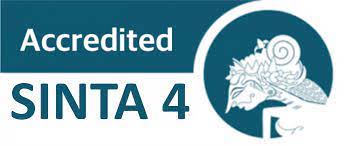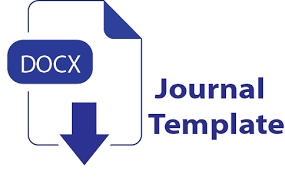THE CHARACTERISTICS OF JAVANESE LANGUAGE IN BLORA DIALECT
A SOCIOLINGUISTICS STUDY
DOI:
https://doi.org/10.53873/culture.v8i2.270Keywords:
Sociolinguistics, Javanese, Dialect, BloraAbstract
Indonesia is a country that has many regional languages. The diversity of regional languages is a characteristic of Indonesia. One of them is the Javanese language which is used by the Javanese people and has a variety of dialects. Therefore, the writer is interested in conducting research on the characteristics of the Javanese dialect of Blora in accordance with sociolinguistic studies that examines the relationship between language and its speaking community. This is similar to the writer aim to analysis the differences between Blora, Temanggung and Mojokerto dialect. The writer also analyzes the use of Javanese speech level used by the people of Blora. This is because there are still many people who do not know the geographical location of Blora City. In this study, the writer uses a qualitative descriptive method and the data collection methods needed to analysis the data are simak method and cakap method. The analysis results showed that there are characteristics of the Blora dialect and there are differences between Blora, Temanggung and Mojokerto dialect. It can be concluded that the variations of the three dialects have different morphology, phonology, lexical and semantics. This is due to the diversity of dialect differences from the results of regional observations.References
Choudhury, R. U. (2014). The Role of Culture in Teaching and Learning of English. Express, an International Journal of Multi Disciplinary Research, 1(4), 1–20.
Gurning, B., & Ginting, A. (2018). Javanese Language Maintenance of Intermarriages in Rantau Utara. Jurnal Linguistik Terapan Pascasarjana, 15(3), 217–225. https://doi.org/https://doi.org/10.24114/lt.v15i3.14774
Hasanah, E., Sofyan, A., Indonesia, J. S., Sastra, F., & Jember, U. (2015). Jember dan Bahasa Jawa Standar. 1–11.
Holmes. (2013). An introduction to sociolinguistics (fourth edition).Routledge.
Jauhari, E., & Purnanto, D. (2019). The Use of Javanese as a Tool of Expression for Solidarity Politeness in the Ethnic Chinese Community in the Javanese Arek Cultural Area. 338(Prasasti), 140–143. https://doi.org/https://doi.org/10.2991/prasasti-19.2019.22.
Junaidi, Yani, J., & Rismayeti. (2016). Variasi Inovasi Leksikal Bahasa Melayu Riau di Kecamatan Pulau Merbabu. Jurnal Pustaka Budaya, 3(1), 1–17.
Kemendikbud. (2019). Statistik Kebahasaan. Kemendikbud.
Kridalaksana, H. (2001). Principles of Linguistic Change. Blackwell.
Kridalaksana. (2009). Kamus Linguistik (edisi keempat). PT Gramedia Pustaka Utama.
Mijianti, Y. (2017). Peran Bahasa Jawa dan Bahasa Melayu untuk Bahasa.
Riduwan. (2010). Skala Pengukuran Variabel-Variavel Penelitian. Alfabeta.
Suharyo. (2018). Nasib Bahasa Jawa dan Bahasa Indonesia dalam Pandangan dan Sikap Bahasa Generasi Muda Jawa. 13(2), 244.
Sukarto, K. A. (2010). Analisis Kontrastif Sistem Morfemis Nomina Bahasa Jawa-Indonesia. 91–100.
Widiastuti. (2013). Analisis SWOT Keragaman Budaya Indonesia. Jurnal Ilmiah Widya, 1(1), 8–14. https://e-journal.jurwidyakop3.com/index.php/jurnal-ilmiah/article/view/21.
Yuliyani, E. R., & Mukminin, A. (2020). The Influence of Javanese Language Usage in The Sociodrama Method of Increasing Politeness Behavior of Children Ages 5-6 Years. BELIA: Early Childhood Education Papers, 9(1), 20–26. https://doi.org/10.15294/BELIA.V9I1.28693.
Zulaeha, I. (2010). Dialektologi Dialek Geografi dan Dialek Sosial.Graha Ilmu.
Zulfahita, Z., Yanti, L., & Purnamawati, E. (2019). Analisis Komponen Makna Verba “Menyakiti†dalam Bahasa Melayu Dialek Sambas (Kajian Semantik). JP-BSI (Jurnal Pendidikan Bahasa Dan Sastra Indonesia), 4(2), 104. https://doi.org/http://dx.doi.org/10.26737/jp-bsi.v4i2.1087
Downloads
Published
Issue
Section
License
Copyright (c) 2021 Audrizan Wahyu Suprapto, Didit Kurniadi, Eko Heriyanto

This work is licensed under a Creative Commons Attribution 4.0 International License.













